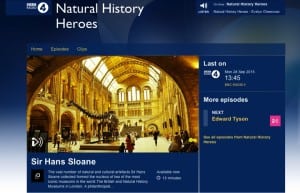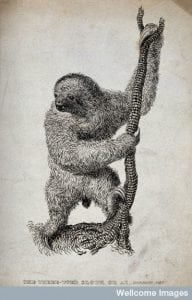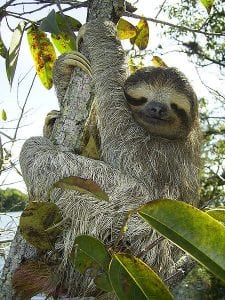
On Monday 28th September at 1:45pm, BBC Radio 4 aired the first segment of their ten-part series about Natural History Heroes and what would be my very first foray into sharing my research on national radio. It was a lot more nerve-racking than I expected, but also an interesting learning experience.
In April of this year (2015), the Natural History Museum (NHM) announced a BBC Radio 4 Natural Histories series. This would be a partnership that would ultimately allow the NHM to share extraordinary stories surrounding their vast collections, as well as the expertise of its scientists. The second element of this collaboration–Natural History Heroes–would then allow a range of experts from the Museum to select and discuss predecessors who inspired their work and lives. Finally, four prominent authors will write original short stories inspired by the incredible narratives uncovered during this partnership.
Wonderfully (and quite rightly!), Sir Hans Sloane was chosen to be the first Natural History Hero. Senior Curator of the British and Irish Herbarium at the Museum, Dr Mark Spencer, spoke charmingly about the incredible Sloane Herbarium. This is currently housed in the Historical Collections Room in the Museum’s Darwin Centre. This purpose-built space, kept at a strict seventeen degrees Celsius, holds Sloane’s collection of ‘Vegetable Substances’–my obsession for the last three years.
Because of my PhD research on the collection, Mark invited me to be part of this programme. In July, the programme’s producer, Ellie Sans, contacted me. Ellie and I talked at length over the phone about the historical research I’ve been doing with the vegetables, particularly my interest in the people who sent botanical material from all over the world to Sloane in London. Ellie was particularly interested in the larger project that surrounds Sloane: Reconstructing Sloane (as well as Reconnecting Sloane) and the significance of this collaborative research.

Portrait of Sir Hans Sloane in the Historical Collections Room, Darwin Centre, NHM London. Image Credit: Victoria Pickering and NHM, London
Mark recorded his part of the programme in the Historical Collections Room itself and I think this worked really well. It gave a great sense of what it’s like to be working in that room, at that temperature, with the objects themselves. I recorded my section a few weeks later and in hindsight, I should have suggested that we did this too. Instead, we spent about 20 minutes searching for a room in the Museum that was quiet enough to record without any background noise. It turns out, this is pretty difficult to do.
Three rooms and three recordings later, in a random but quiet Press Office Room, Ellie had recorded about forty-five minutes of me talking about who I am, where I’m based, what my research is about, what I’ve been doing, and why this is significant for today. Beforehand, Ellie had sent me a list of questions she would ask me, and I spent lots of time preparing my answers and thinking about the best way to reflect on my research. It really made me question why researching Sloane in different ways might be relevant to someone listening to the show.
I generally really enjoy presenting my research–and the wonderful thing about working with a Museum collection is the opportunity to share my work with all sorts of audiences through different public engagement activities. But I wasn’t prepared for how I would feel with a microphone under my nose while trying to talk ‘naturally’ about what I do and why this is important. It’s amazing how people involved in broadcasting make it look and sound so effortless. At the end, Ellie mentioned that experts react in different and surprising ways when asked to do similar recordings. This definitely made me feel better!

Drawers containing Sloane’s collection of ‘Vegetable Substances’. Image Credit: Victoria Pickering and NHM, London
By the end of the interview I had relaxed and was feeling more comfortable… and especially happy that this hadn’t been a live broadcast. I had no idea what the final show would sound like or how much of what I said would be included, but I thought that Ellie did a beautiful job of editing it.
It was primarily Mark’s show, so I was really pleased to have been included as much as I was, with my interview woven through the programme in such an interesting way. Ultimately, I’m just delighted that I could talk about broadcast Sloane, his incredible collections and the research that a number of us are undertaking, to a national audience. Working with the NHM provided me with this exciting opportunity.
Now, I hope, the programme’s listeners are intrigued and keen to know more about Sloane and his astonishing eighteenth-century natural history collections.


















![A woman is carrying a tray with a cup of chocolate [or maybe the pleurisy remedy?] and a glass on it. Credit: Wellcome Library, London.](http://sloaneletters.com/wp-content/uploads/2014/01/Cup-of-chocolate-221x300.jpg)
